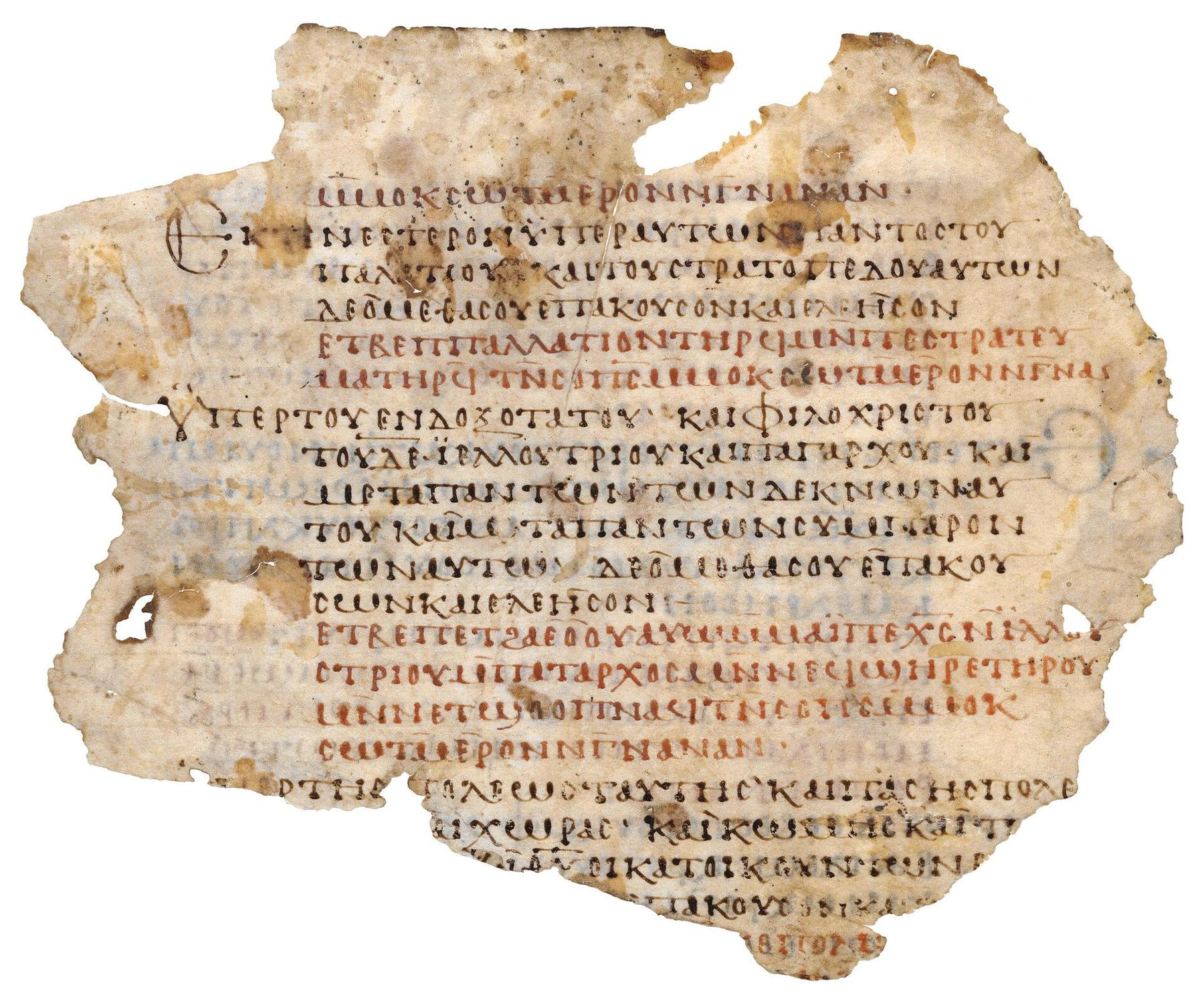« The Power of Words » in the Papyrus Museum – DiePresse.com

Egyptian, Greek, Latin, Arabic: The old Egypt was always multilingual after Alexander. A fascinating exhibition in the Papyrus Museum shows the different effectiveness of the languages.
« Genesai », it will happen: the recovery formula on the court of the governor of all of Egypt is in large letters on the papyrus – and in Greek, although the other document is written in Latin (and in smaller letters). It dates from AD 399, when the court language in the Roman province of Aegyptus was already Latin. But the greater strength was apparently attributed to the Greek.
This also illustrates a small papyrus leaf from the fifth century: in black ink, after a cross, it is « cocketically », so bad luck, misfortune. A curse? The name of the cursed is missing. The piece of paper can be read more as a protective amulet: Anyone who calls the accident (even very abstractly).
This is the « power of words », according to which the new special exhibition was named in the Papyrus Museum. It often depends on the language in which the words are written. In Egypt, where the Egyptian dominated for at least two millennia – written first in hieroglyphs, then hieratic, then demotically – with the conquest by Alexander (332 BC) Greek. But Egyptian not only remained a popular language, the public transport of the Ptolemae was bilingual. Contracts were also written in Coptic in the Roman province (from 27 BC), but with a Greek summary. The Roman gentlemen tried surprisingly little to enforce their language. « Back then, Greek was established as a world language as it is today, » explains Bernhard Palme, director of the Papyrus Museum. It even retained its rank after the Arab conquest (AD 640), and only after three generations did the Calipm order the use of the Arabic.
A law firm called Petosiris
The – in the seventh or eighth century – input of an Arabian called Yazid ibn Aslam to the tax authority, of course, is held in Arabic (in archaic form, without diacritical signs) – and full of pious phrases, but with a Christian greeting: The law firm was apparently not a Muslim. Was he a Christian? His name, Petosiris, still reminds of the god Osiris. This does not mean that the officer held up the ancient Egyptian religion – the deeds and do Christians, who at the time was called Isidoris (after ISIS) or are now called Isidor, generally not.
What is unknown is the interpretation of an summoning to heal a young woman named Phantuxia: she is kept from the tenth or eleventh century, and contains calls to the « Great Cherub Asaroth » (sic!) And from Engeln called Epletael, Eplaneel, Raphael and Ripiel. This does not have to speak for the Christian faith, it could also be pure magic words. « The border between magic and medicine was still blurred at the time, » explains Angelika Zdiarsky, curator of the exhibition. It is typical of a magical text that the mother of the woman and not her father is called.
Love magic to the fresh grave
Numerous angels are also called on an Arabic love spell from the ninth century, which also contains magical letters: eligible but non -interpretable words that work through the sound and are to get the heart of a certain Fullana. Tafelchen with such love spells were secretly put into the fresh grave of a recently deceased: from there the spell should quickly find its way to the addressed powers of the underworld.
The magic often includes anachronisms. A papyrus from the Roman imperial era, written in hieratical signs and in the Central Egyptian, i.e. a language form that has not been spoken for over 2000 years at the time: a call to a fly (« Case to Earth! »), Apparently to averted diseases.
A ketubba, a Jewish marriage contract, from 1083 AD: it probably comes from the geniza (the warehoused warehouse for liturgical writings) of the Ben-Esra-Synagogue by Cairo, which was only rediscovered in 1890, like a rational counterpart to such magical customs. It is written in Aramaic, the language that already spoke Jesus, but the signatures are Hebrew and Arabic. This document shows that Jewish communities were apparently able to stay in the Egypt at that time despite the inherent anti -Judaism of the Koran. And it shows how long the cultural diversity in Egypt has reflected in multilingualism.
Exhibition
« The power of words. Rule and cultural diversity in ancient Egypt »: until May 3, 2026, Papyrusmuseum of the Austrian National Library, Vienna 1, Neue Burg.






:format(webp)/s3/static.nrc.nl/wp-content/uploads/2025/06/05082658/data133175350-349c0f.jpg)
